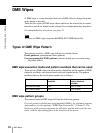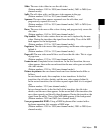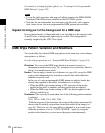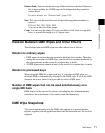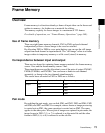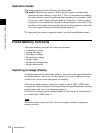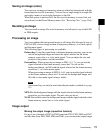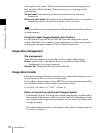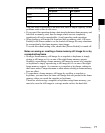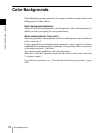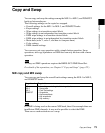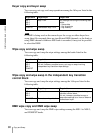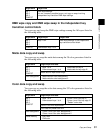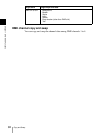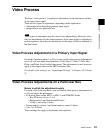
Chapter 1 DVS-9000 Functions
76
Frame Memory
with respect to the screen. The area of the screen around the image that has
been moved is filled with black. There are two ways of carrying out this
repositioning.
Normal mode: Movement in the horizontal direction is in two-pixel
increments.
Black and white mode: Movement in the horizontal direction is in one-pixel
increments, and for each pixel moved the color is inverted.
Note
It is not possible to save an image moved with the reposition function directly
to frame memory.
Fixing the output image selection (lock function)
For the output of each of FM1 to FM8, this fixes the image at the current
output. When this lock is enabled, even if the output is recalled in a snapshot
or keyframe, the images output to FM1 to FM8 are preserved.
Image data management
File management
The following operations are possible on files created to hold images.
Delete: Specify a file to be deleted. It is also possible to delete all files
simultaneously in a single operation.
Rename file: Change the name of the specified file.
Image data transfer
Files can be transferred between such devices as a hard disk and memory card.
In the File menu, files can be saved and recalled.
It is possible to import images such as BMP files or convert frame memory files
into a different format and save them in an external device.
For details, see Chapter 17 “Files” (Volume 2).
Notes on transferring multiple still images together
• Transferring all of the still image files within frame memory together fails if
the capacity of the memory card is too small to hold all of the images. In this
case, replace with a larger capacity memory card, or delete still images until
saving is possible.
The relation between memory card capacity and number of images that can
be saved is as follows.



